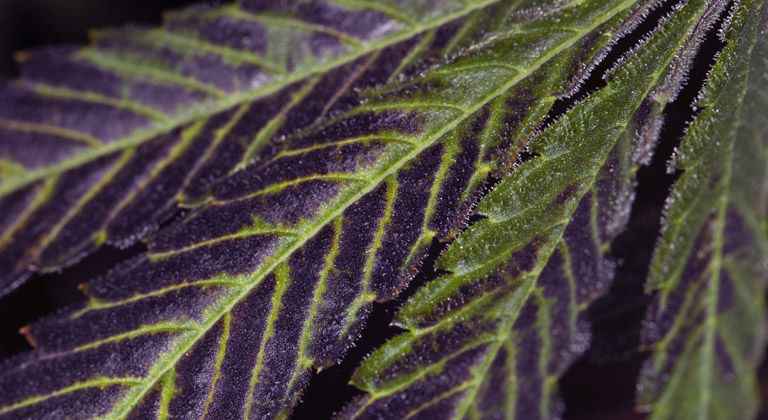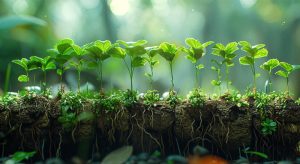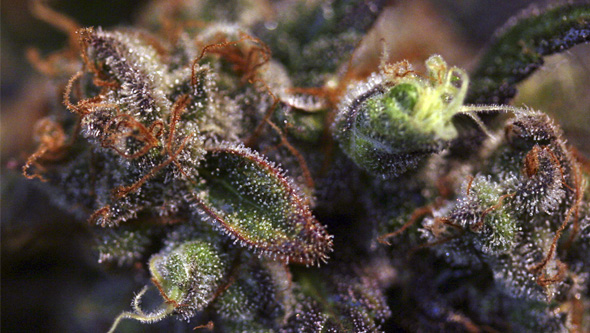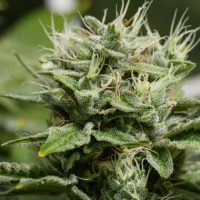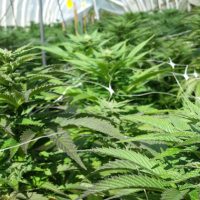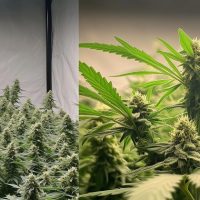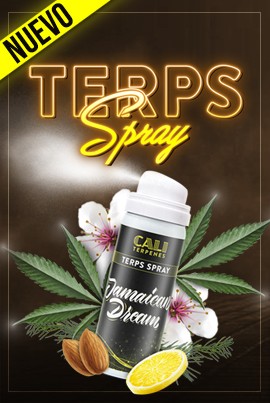Growing cannabis in regions with cold climates (such as in northern European countries like Germany or England) presents some characteristic challenges.
It is important to note that the optimal temperature range for cannabis cultivation is 20 – 22ºC minimum (night) and 24 – 26ºC maximum (day). However, cannabis can be grown within a range of 18ºC minimum at night and 30ºC during the day.
Outside of these limits, the plant will have more difficulty carrying out its biological processes, which can lead to:
- Difficulty absorbing nutrients.
- Delayed or stunted growth.
- Poor root structure.
- Hermaphroditism (this can occur due to thermal stress, especially when temperatures are too high).
- Root rot.
- Increased chances of mold and fungal attacks.
All these factors result in a drastic reduction in both the quality and quantity of flowers.
How to Grow Cannabis Outdoors in Cold Climates
As we’ve just explained, cannabis plants need mild temperatures to develop correctly. Therefore, when we talk about growing cannabis outdoors in cold climates, we always mean to do it during the summer season.
While cannabis seeds can be germinated in March-April in warmer regions like southern Spain, in northern climates you’ll need to wait for longer for the arrival of warm weather.
Generally speaking, the weather in these colder regions can be variable, with their summer being much shorter. Therefore:
- Make sure the good weather has come to stay. In their first stage of life, cannabis plants are really vulnerable, and a sudden drop in temperature could be fatal.
- If summer in your region doesn’t start until well into the month of June, and you want to get good-sized plants with feminized seeds, you can germinate your seeds and let them vegetate indoors (in April-May), for then taking them outside in June when temperatures are more favorable.
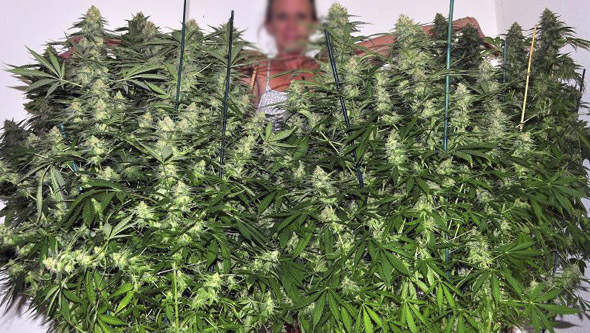
Choose the Right Cannabis Seeds to Grow in Cold Climates
One of the main dangers of growing cannabis outdoors in cold climates is the early arrival of autumn. In northern areas of the northern hemisphere, October is already a cold month prone to rain.
Therefore, a good option to prevent your grow from being spoiled with the appearance of mold and other diseases is to use Fast seeds.
Fast strains are photo-dependent, so they depend on a change in the light cycle to start flowering (meaning you can grow them for as long as you want until they become rather large). But they have the peculiarity of having a flowering period that’s 2 weeks shorter than that of normal feminized seeds. These strains result from the cross between autoflowering strains and photo-dependent feminized varieties.
Thus, strains like BCN Critical XXL Fast from Seedstockers will be ready for harvest by mid-September without having to give up large, high-quality yields.
Autoflowering seeds are the queens of outdoor cultivation in cold climates, as their full life cycle (from germination to harvest) only takes 3 months. These strains don’t depend on the amount of hours of light that they receive to flower, which makes them the perfect option for the maximisation of the short summer window in countries with cold climates.
There are also photo-dependent strains that don’t contain any ruderalis crosses (which is the origin of autoflowerings), but they finish flowering before the end of September. This is due to the breeders’ expertise in developing these seeds, selecting plants with very short flowering times for their crosses. This is the case of Jamaican Dream, whose top quality crops are harvested in late September, thus avoiding the autumn cold.
Tips for Growing Cannabis Outdoors in Cold Climates
- Soil vs. Pot Cultivation: The temperature in pots can always be better controlled than the soil temperature through the use of electric blankets, heaters, heating cables, etc. In direct soil, you can try using mulch or grass cover.
- Protect your Plants: Temperature changes in the summer in cold regions are common, so you should have a system ready to protect your plants from heavy rains or excessively cold nights. You can use tarps or a structure to put a clear plastic sheet over and set up a temporary greenhouse to protect your grow from the cold.
- Microbial Life Boost: A strong root system is crucial for any plant, especially if it’s going to be subjected to thermal stress. Compounds containing Trichoderma and Mycorrhizae can help the plants, but there are other specialized compounds like those derived from algae (such as kelp or Ascophyllum nodosum) that can be highly beneficial. These generate certain amino acids that, in freezing conditions, increase sugar concentrations, helping the plants survive the freezing conditions.
- Germinate Indoors, Grow Outdoors: Cautious growers germinate indoors, letting the seedlings grow a little before taking them outside, as they’re particularly sensitive to temperature changes.
- Specific Nutrient Supply: Control abiotic stress with elements like silicon, boron, and zinc, which are present in some fertilizers and additives. Additionally, you can delve into the beneficial effects of applying humic and fulvic acids.
- Avoid ‘Thermal Shock’: This includes ‘heat shock’ and ‘cold shock’ (also known as frost). You can recognize this because the plant, previously in good condition, gets stressed, losing tension in its leaves and showing a wilted appearance. In this case, the temperature impact can be prevented by using a greenhouse plastic cover.
- Proper Irrigation: It is advisable to water during the central hours of the day to make the most out of the sunlight. This way, the plant has time to absorb the water it needs before nightfall, when it gets colder and it can have more difficulties doing so. Using the right amount of water and watering only when necessary will avoid many problems related to root rot.
- Improve Soil Structure: For outdoor growing in northern climates, it is essential that the soil has excellent drainage to prevent water accumulation, which again could cause problems in the root system. The substrate should also be well ventilated to ensure proper evaporation.
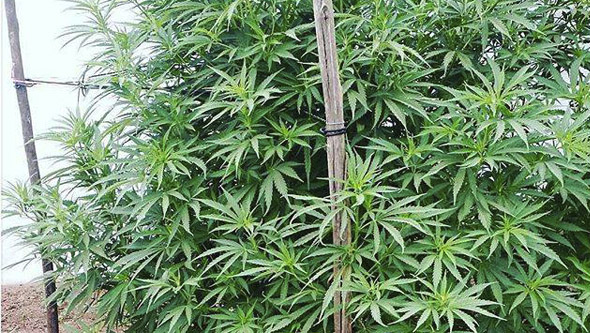
Indoor Cannabis Growing in Cold Climates
Growing cannabis outdoors in countries with cold climates is not possible during the winter, because temperatures drop too low.
That’s why most growers in areas with cold climates choose to grow indoors, whether in grow tents, grow rooms, or greenhouses.
- In an indoor grow, there are no seasons because temperature and humidity levels are controlled, and lighting is provided by lamps which can be switched on and off at will.
- In this type of grow, you can always use heaters, electric blankets, or heating cables.
- HPS or MH lights emit enough heat to keep the plants warm, cautious growers can take advantage of this heat through a clever distribution of air within the grow. If you choose LED lamps for your grow, you won’t benefit from this heat input.
- Both greenhouses and grow tents can be made from materials that provide thermal insulation from the outside, keeping the indoor temperature constant.
- The irrigation system can be perfectly adjusted so that there’s neither too much nor too little moisture.
- There are many systems to prevent moisture build-up, which prevents the appearance of mold.
Best Cold-Resistant Cannabis Seeds
The native strains most adapted to cold climates are the ones that produce the most cold-resistant cannabis plants.
These strains are usually bushy, fast growing, and very resinous. Afghan, Skunk, Kush, or Critical are some of the most resilient families.
One of the most well-known strains is Matanuska, a plant with ruderalis soul that can withstand lower temperatures better than other strains. Or the super fast Red Dwarf, which is ready for harvest in just 60 days from germination. Other top seeds for outdoor growing in cold climates are found within the ‘star system’ of cannabis, and include the legendary White Widow, Northern Lights, Big Bud, Thunder Banana, Super Skunk, and OG Kush. Or you could even have a go with the new Rotten Apple from Perfect Tree.
Outdoor growers in these colder regions usually take advantage of the warm months, especially in summer. Since summer is shorter than in other latitudes, it’s best to go for autoflowering strains, like Orange Kush Auto (63 days in total) or Magnum Auto (75 days in total), which produce their crop in just three months.
Finally, growers can opt for ‘Fast’ or ‘Early’ strains to obtain a feminized plant that’s harvested two weeks earlier than any other of its kind, thereby avoiding the cold season. In this section, you can find Cookies Fast from Seedstockers or 00 Kush Fast from 00 Seeds (a strain that’s also quite productive).
Conclusion
Growing cannabis outdoors in cold climates can be challenging, but with the right cannabis seeds and growing strategies, you can obtain bountiful harvests of buds full of aromatic resin. Caution in these cases will definitely be the grower’s best ally.
